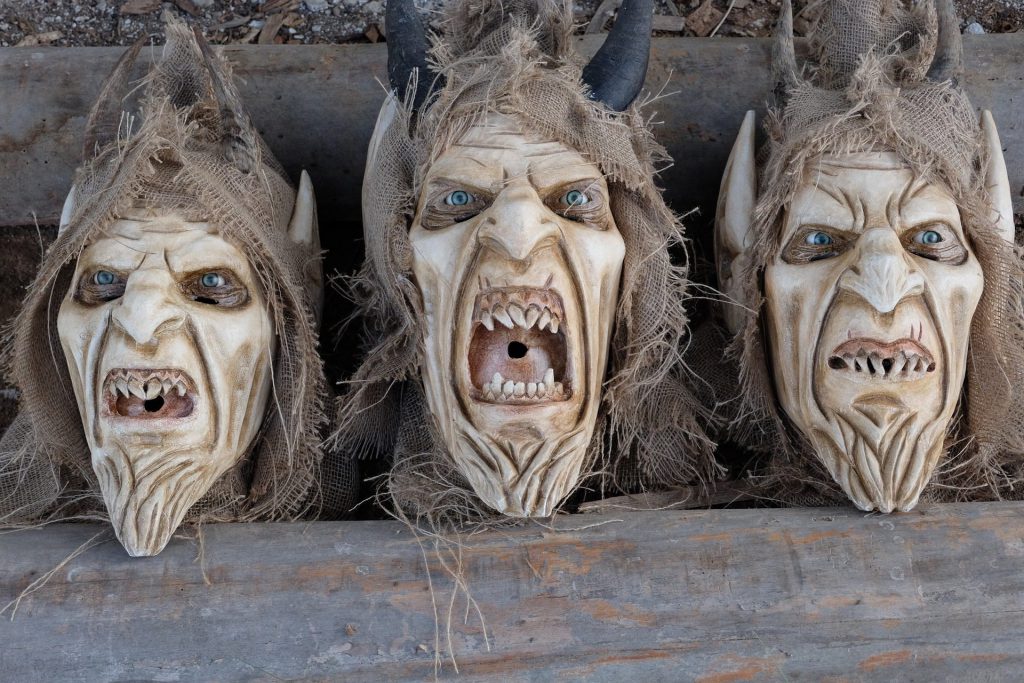
7 Christmas Traditions from Around the World
Everyone celebrates Christmas a little differently. For most people, the festive season brings merriment, warmth, and love, with time spent with loved ones, gifts, and special food. However, everyone will have slightly different traditions and ways they celebrate. Below are some of our favourite Christmas traditions from around the world.
The Yule Goat, Sweden
The Swedish tradition of the Yule Goat dates back to the 11th century, where it was said that St Nicholas was accompanied by a goat figure who could control the devil. The legend developed over the years when in the 17th century people would dress up as a goat in the Yuletide, pulling pranks and demanding people give them presents. By the 19th century, the goat had instead become the giver of gifts and was no longer the villain.
Now, the town of Gävle has a giant straw goat decorated with red ribbon, which has been a symbol of Christmas in the area since the 1960s. Whilst other Swedish towns may have their own Yule Goat, the Gävle Goat is the world’s largest straw goat. Unfortunately, a new “tradition” has developed of people attempting to burn down the goat – and they have been successful 29 times since 1966. You can watch this year’s Gävle Goat via a livestream to see if it makes it to Christmas!
Giant Lantern Festival, Philippines
The Philippines has one of the longest festive periods in the world, with Christmas celebrations starting as early as September and going all the way through to December. The city of San Fernando is known as the Christmas capital of The Philippines and it’s where the annual Giant Lantern Festival, or Ligligan Parul, is held on the Saturday before Christmas Eve.
This tradition started in 1904 and involves local villages competing to make the most beautiful colourful lanterns. When the festival started, the lanterns were quite simple, but now they are elaborate creations with kaleidoscope patterns of coloured light, sometimes up to 15 feet in diameter. In the Philippines, light represents hope, with the festival celebrating hope for the festive season and the following year.
Krampus, Austria
Whilst in many places the focus of Christmas is on jolly Father Christmas, in Austria they have Krampus, the demon-like creature that accompanies St Nicholas. It’s thought that Krampus has connections to the Pagan festival around the winter solstice and is thought by some to be the son of Hel, the Norse god of the underworld.
The tradition goes that Krampus and St Nicholas arrive on the 5th December – St Nicholas rewards the good children with gifts and Krampus punishes the children that have been naughty by beating them with sticks.
Nowadays, the legend of Krampus is kept alive with annual Krampus runs, where people dress up as the creature and parade through the streets.
The Yule Lads, Iceland
Iceland has many great Christmas traditions, including that of the Yule Lads, or jólasveinarnir. The Yule Lads are a group of 13 troll-like pranksters who cause mischief amongst the population over the 13 nights before Christmas. The tradition goes that children should leave their best shoes on the windowsill of their room. Children that have been good will receive a nice gift from the Yule Lads, whereas those that have been bad will get a rotting potato skin. In recent times, the Yule Lads have been depicted as being nicer and more akin to a Father Christmas-like character.
The Yule Lads all have names which relate to their specific type of mischief, including: Pottaskefill (Pot-Scraper), who steals leftovers from pots; Hurðaskellir (Door-slammer), who likes to slam doors in the night to wake people up; and Bjúgnakrækir (Sausage-Swiper), who likes to hide in the rafters and steal sausages that have been left to smoke.
Cobwebs, Ukraine
Ukrainians might include a traditional Christmas decoration not normally seen elsewhere – cobwebs! Not only may spiders be given some leniency around Christmas time, with cobwebs more accepted in the home, some people also decorate their tree with intricate spider web decorations.
The tradition is linked to the legend of the woman who could not afford to decorate her tree for her children on Christmas. It’s said that the spiders took pity on her and decorated her tree with their beautiful webs instead, just in time for Christmas day. Thanks to this legend, spiders and their webs are connected to good luck, with Ukrainian cobweb decorations symbolizing bringing in good fortune for the coming year.
Befana the Witch, Italy
In Italian culture, the present giving happens on 6th January, on the Epiphany. And instead of Father Christmas delivering presents, it’s Befana the old woman (sometimes known as the witch) who fills children’s stockings with sweets and gifts or coal, depending on whether they’ve been naughty or nice. Befana rides a broom to visit each house and even sweeps up on her visits.
Italian families will sometimes leave Befana a drink of wine and some local delicacies in the same way that some families might leave Father Christmas a glass of milk and a cookie.
Expatriate Group are the experts in international healthcare. Whether you need travel insurance for your trip, or your relocating and need international health insurance, we have a variety of comprehensive plans to suit your needs and budget. Contact us to see how we can help with your international healthcare requirements.
